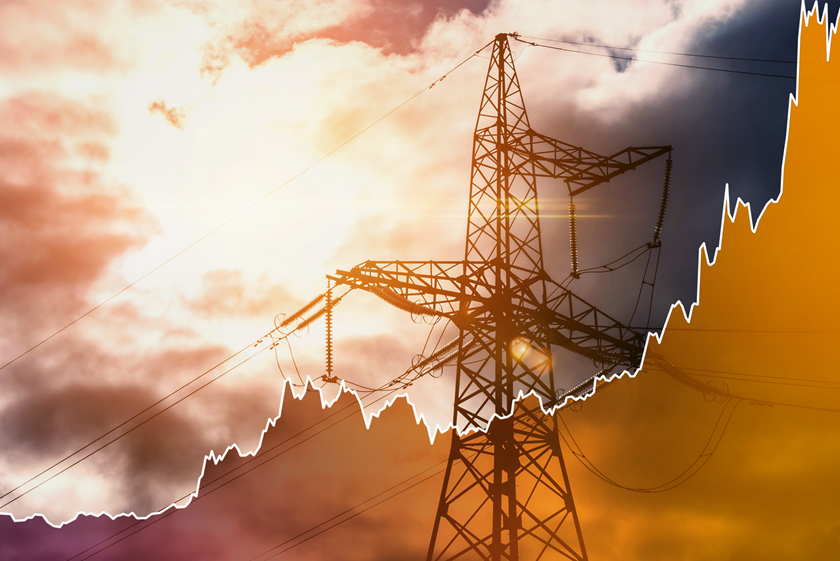Nachrichten
Bidirectional DC DC Converter: A Two-Way Power Transfer Solution
Autor: ZYG Leistungsmodul Time: 2023-6-12
A bidirectional DC-DC converter is a power transfer solution that allows for two-way power conversion between two different voltage levels. This type of converter is commonly used in applications where power needs to be transferred bidirectionally, such as in electric vehicles, renewable energy systems, and battery charging systems.
The bidirectional DC-DC converter is a device that converts power from a high voltage level to a low voltage level, or vice versa, depending on the direction of power flow. This is achieved by using a combination of power switches, inductors, capacitors, and control circuitry.
The converter operates in two modes: buck mode and boost mode. In buck mode, the converter steps down the voltage from the high voltage level to the low voltage level. In boost mode, the converter steps up the voltage from the low voltage level to the high voltage level. The direction of power flow determines which mode the converter operates in.
The bidirectional DC-DC converter has several advantages over other power transfer solutions. One of the main advantages is its efficiency. The converter is designed to minimize power losses and maximize power transfer efficiency, which results in less energy wasted and more energy transferred between the two voltage levels.
Another advantage of the bidirectional DC-DC converter is its flexibility. The converter can be used in a variety of applications and can handle a wide range of voltage levels. This makes it an ideal choice for applications where power needs to be transferred bidirectionally between two different voltage levels.
In addition, the bidirectional DC-DC converter is compact and lightweight, which makes it easy to integrate into existing systems. This compact design also helps to reduce the overall cost of the system, as fewer components are required to achieve the same level of power transfer efficiency.

Despite its many advantages, the bidirectional DC-DC converter also has some limitations. One of the main limitations is its complexity. The converter requires a sophisticated control circuitry to ensure that the power transfer is efficient and reliable. This complexity can increase the cost and complexity of the overall system.
Another limitation of the bidirectional DC-DC converter is its susceptibility to electromagnetic interference (EMI). The high-frequency switching signals used by the converter can generate EMI, which can affect other components in the system and reduce overall system performance.
In conclusion, the bidirectional DC-DC converter is a two-way power transfer solution that offers several advantages over other power transfer solutions. Its efficiency, flexibility, and compact design make it an ideal choice for applications where power needs to be transferred bidirectionally between two different voltage levels. However, its complexity and susceptibility to EMI may limit its use in certain applications.
Vorherige: Bidirectional DC-DC Converter: A Versatile Power Conversion Solution
Nächste: DC DC Converter EX Series: Advanced Power Conversion Solutions
relevante Information
-
2023-4-21
Building a 120 Volt AC Power Supply for 3 Volts DC
In this guide, we will be building a 120-volt AC power supply that can provide 3 volts DC output. This power supply will be useful for a variety of electronic projects that require a low voltage DC power source. To begin, we will need the following materials: - Transformer: A transformer is a device that converts high voltage AC power to low voltage AC power. In this case, we will need a transformer that can convert 120V AC to 6V AC. - Bridge rectifier: A bridge rectifier is a circuit that converts AC power to DC power. We will be using a bridge rectifier that can handle at least 1 ampere of current. - Capacitor: A capacitor is an electronic...
Einzelheiten anzeigen -
2023-12-1
Top-Notch Efficiency and Flexibility: Introducing the 850-Watt Modular Power Supply
In today's digital age, technology is advancing at an unprecedented pace. As a result, the power demands of our devices continue to increase. This is where the importance of a reliable and efficient power supply comes into play. Introducing the 850-Watt Modular Power Supply, a cutting-edge solution designed to meet the power needs of even the most demanding systems. Efficiency is a key factor when it comes to choosing a power supply. The 850-Watt Modular Power Supply excels in this regard, offering an impressive efficiency rating of over 90%. This means that it wastes less energy and generates less heat, resulting in a more stable and reliable power source. Whether you are a gamer, a content creator, or a professional...
Einzelheiten anzeigen -
2023-12-15
Adjustable DC-to-DC Step-Down Power Supply Module: A Versatile Solution for Voltage Regulation
Power supply modules play a vital role in various electronic devices and systems. They are responsible for converting and regulating the input voltage to the desired output voltage, ensuring the proper functioning of the circuitry. One such power supply module that has gained popularity in recent years is the adjustable DC-to-DC step-down power supply module. The adjustable DC-to-DC step-down power supply module offers a versatile solution for voltage regulation. It is designed to take an input voltage, typically higher than the desired output voltage, and bring it down to the desired level. This module is widely used in applications where a stable and regulated power supply is required, such as in battery-powered devices, automotive systems, and industrial equipment. One of...
Einzelheiten anzeigen -
2023-5-22
Powering Industrial Equipment with Efficient AC-DC Converters
The reliable and efficient operation of industrial equipment relies heavily on the quality of the power supply. To ensure optimal performance, industrial equipment often requires a stable and clean DC voltage that can be generated from the AC mains power supply using an AC-DC converter. Traditionally, industrial equipment has been powered by bulky and heavy linear power supplies that convert AC to DC using a transformer and rectifier circuit. However, advancements in semiconductor technology have led to the development of more efficient and compact AC-DC converters that utilize switch-mode power supply (SMPS) topologies. One of the most common SMPS topologies used in industrial equipment is the flyback converter. This topology is simple, cost-effective, and can provide high power density. It...
Einzelheiten anzeigen -
2023-6-14
Power supply is an indispensable part in electronic devices. It provides the necessary power to run the device and is responsible for its proper functioning. In recent years, with the development of technology, the demand for power supplies has increased and manufacturers are constantly striving to provide more efficient and reliable power supplies. One such power supply that has gained popularity in the market is the DM Series DC DC Power Supply. The DM Series DC DC Power Supply is a high-performance power supply designed to meet the demands of today's electronic devices. It is widely used in various fields, such as telecommunications, medical equipment, military, aerospace, and industrial automation. The DM Series power supply is designed to provide stable...
Einzelheiten anzeigen -
2023-5-6
Designing an AC-DC Converter Circuit
An AC-DC converter circuit is an essential component in many electronic devices. It is a device that converts alternating current (AC) to direct current (DC). This circuit is commonly used in power supplies for electronic devices, such as laptops, smartphones, and other household appliances. In this article, we will discuss the basic components of an AC-DC converter circuit and the steps involved in designing one. Basic Components The basic components of an AC-DC converter circuit include a transformer, rectifier, filter, and regulator. The transformer is used to step down the AC voltage to a lower value. The rectifier converts the AC voltage to DC voltage. The filter removes the unwanted AC components from the DC output, and the regulator is...
Einzelheiten anzeigen

















